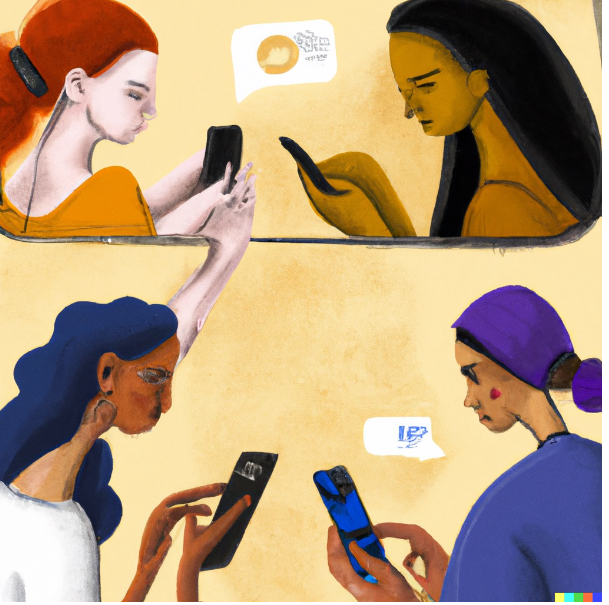How Word-of-mouth Marketing is Replacing Digital Ads
“This image was generated with the assistance of AI (DALL-E 2)”
For years, businesses and organizations have almost exclusively relied on web banners and digital advertisements to reach audiences online.
But the nature of online marketing changed drastically over the past couple of years. Engagement with digital ads is vastly overstated, advertisers face increasingly restrictive social media companies under pressure from legislative scrutiny and data privacy concerns, and the costs associated with advertising online are only increasing.
In short: digital ads are on their way out. And word-of-mouth marketing is replacing them.
Word-of-mouth marketing, also known as organic social sharing, relies on influencers, small-scale content creators, and everyday social media users to spread messaging and galvanize online audiences to perform an action, whether donating, purchasing, or signing a petition.
Companies like Bitly and Linktree have been pioneers in the field of word-of-mouth marketing, bringing easy-to-access content and authentic messaging to the forefront of user interactions on social media. Though word-of-mouth marketing tools vary, they all emphasize cost-effective empowerment of everyday users and content creators to share content online.
Here are the ways word-of-mouth marketing is outperforming digital advertising and delivering more online engagement at a lower cost:
Reaching the Right Audiences
Digital advertising can reach thousands of people online and generate large numbers of impressions. But it’s always been limited in its ability to reach specific audiences that would engage with companies’ branding and content.
This ability has been hampered even further in recent years by developments such as Apple’s limitation of the sharing of consumer data and social media companies like Meta and Twitter imposing further restrictions on targeted advertising.
Word-of-mouth marketing overcomes these obstacles by relying on everyday people and individual content creators authentically sharing messaging online.
These users can successfully engage people in their own networks in a way digital advertising cannot, as studies have proven social media users engage with user-generated content shared from trusted connections much more than branded content from companies.
This allows for a much more targeted approach to online marketing that harnesses the networks of like-minded social media users to spread content, and ultimately generate greater engagement.
Lowering Marketing Costs
Digital advertising is becoming increasingly expensive. 2021 saw dramatic increases in costs per thousand impressions (CPM) across all online platforms, from a 108% increase for Google/YouTube to an 89% increase for Facebook.
Word-of-mouth marketing provides a cost-efficient alternative to paying more for less.
While rudimentary tools such as share buttons and Google doc sharing toolkits can be used for little cost, there are software companies offering more structured and intuitive toolkits companies can use to compose, organize and share content online. These toolkits allow content creators to compose a variety of messages that can easily be shared and customized by followers to their own followers, organically reaching numerous online networks for little, to no cost.
Companies have used these tools to great effect. For example, political advocacy non-profit DemCast was able to use organic toolkits shared among supporters to generate $1.4 million in campaign fundraising, all at no cost per impression or share. Additionally, venture capital firm Antler’s Netherlands branch used word-of-mouth marketing to promote company events and news online, generating roughly $63,000 in online engagement.
Greater Engagement with Authentic Messaging
Word-of-mouth marketing allows for a perfect medium between purely user-generated content and branded content in a way that optimizes engagement.
Gone are the days of old-school “advertising mentality,” the assumption that banners on webpages or social media adverts alone will generate engagement.
The process of engaging audiences with word-of-mouth marketing emphasizes companies creating content that prompts and facilitates people online to share their own points of view and perspectives. That means anything from sharing a positive review of a product or service to promoting fundraisers people feel passionate about.
This authentic messaging — driven by user experiences and perspectives — in turn, drives higher engagement with the content. And the best part is this authenticity establishes a sustainable marketing strategy that avoids high ad costs and boosts audience targeting.


